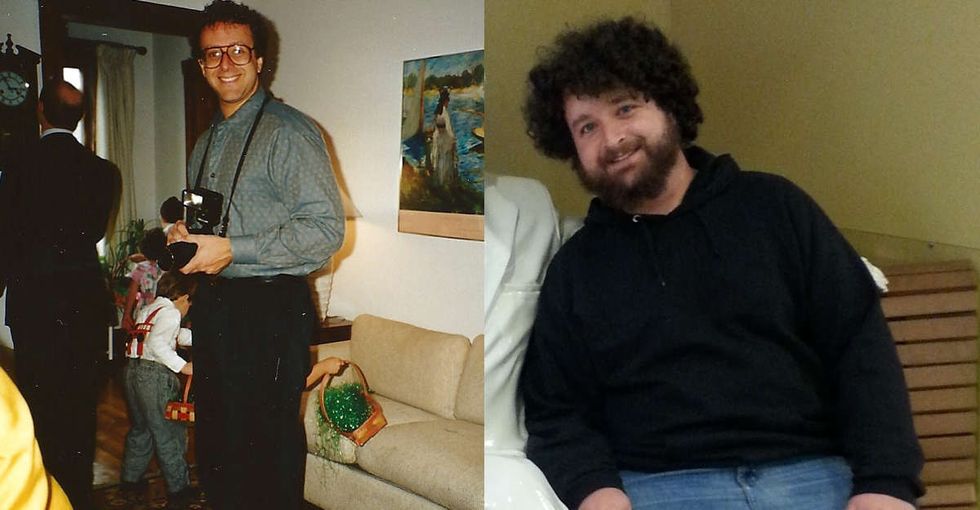I told a kid a riddle my dad told me when I was 7. His answer proves how far we've come.
This classic riddle takes on new meaning as our world changes for the better.

When I was 7, my dad told me a riddle.
"A man and his son are driving in their car when they are hit by a tractor-trailer.

(We were driving at the time, so of course this was the riddle he decided to tell.)
The father dies instantly.
The son is badly injured. Paramedics rush him to the hospital.

As he is being wheeled into the operating room, the surgeon takes one look the boy and says:
'I can't operate on him. He's my son.'
How is that possible?!"
Without missing a beat, I answered:
"The doctor is his mom!"

Photo via iStock.
My dad first heard the riddle when he was a child in the '60s.
Back then, most women didn't work outside of the home.
Few of those who did had college degrees, much less professional degrees.
Female doctors were few and far between.
Back then, it was a hard riddle. A very hard riddle.
By 1993, when I first heard it, the notion that women could be highly skilled, highly trained professionals wasn't so absurd.
To me, it was normal.
I knew women who were lawyers. Bankers. Politicians. My own doctor was a woman.
To be sure, women still faced challenges and discrimination in the workplace. And even 20 years later, they still do.
But at its core, the riddle is about how a family can work. And that had changed. Long-overdue progress had rendered the big, sexist assumption that underpinned the whole thing moot.
A very hard riddle was suddenly not a riddle at all.
I never forgot it.
Now, I'm 30 — almost as old as my dad was he first told me that riddle.

My dad at 30 (left) and me at 30. Photos by Eric March/Upworthy and Mary March, used with permission.
I don't have kids, but I mentor a child through a volunteer program.
Once a week, we get together and hang out for an hour. We play ping pong, do science experiments, and write songs. Neither of us like to go outside.
It's a good match.
One day, we decided to try to stump each other with riddles.
He rattled off about five or six.
I could only remember one: The one about the man, his son, and the surgeon.

Photo via iStock.
I thought it would be silly to tell it.
I was sure that, if it was easy in 1993, it would be even easier in 2014. Kind of ridiculous, even.
But a part of me was curious.
It had been 21 years — almost as long as it had been between when my dad first heard the riddle and when he shared it with me.
Maybe it wouldn't be so easy.
Maybe I was missing something obvious, making my own flawed assumptions about how a family could work.
Maybe the world had changed in ways that would be second nature to a 13-year-old but not to me.
So I began:
"A man and his son are driving in their car, when they are hit by a tractor-trailer. The father dies instantly. The son is badly injured and is rushed to the hospital by paramedics. As he is being wheeled into the operating room, the surgeon takes one look at the boy and says:
'I can't operate on him. He's my son.'
How is that possible?!"
Without missing a beat, he answered: "it's his other dad"

Photo via iStock.
Times change. Progress isn't perfect. But no matter what shape a family takes, at the end of the day, #LoveWins.
This article was written by Eric March and originally appeared on 06.21.16
- Teacher asks kindergartners where they would time travel - Upworthy ›
- Irish kiddo's 'trolley problem' joke has people in stitches - Upworthy ›
- Dad doesn't want to be called by his first name - Upworthy ›
- Why are public bathroom doors so frustratingly short? - Upworthy ›
- Waxers, nurses, and doctors share their unfiltered inner thoughts about your 'privates.' - Upworthy ›
- Woman shares the 3 things she could never get away with having a secret service father - Upworthy ›
- Boy breaks down crying after learning his new puppy was a gift from his late father - Upworthy ›
- Dad shares his struggle to connect with son, how he fixed it - Upworthy ›

